Agfa Click II – More than perfect
How many megapixels do you need to take great pictures? And which camera features are required to facilitate your work?
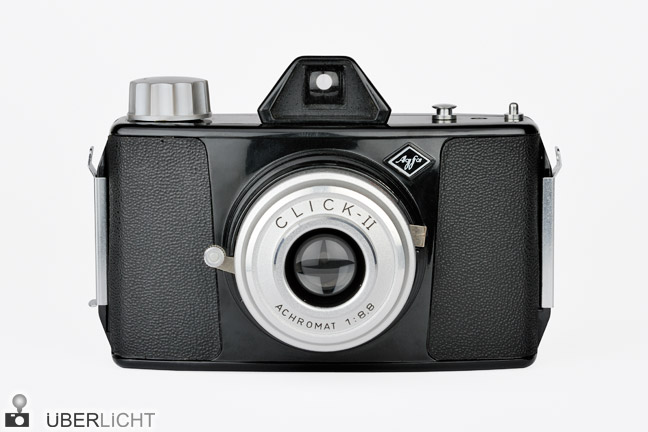
Agfa Click II – © Überlicht (MB)
Agfa Click II
More than three years ago an Agfa Click II became my constant companion. This circumstance was neither achieved by a high-resolution image sensor nor by any other special features, but is owed to the absence of modern settings. Apart from all the things the Click is lacking, it holds some attributes that make photography such a pleasure. The 50 year old leather case, that closes with a press button on its back and still is in near mint condition, as well as the sturdy plastic body are just the beginning.

Agfa Click II leather case – © Überlicht (MB)
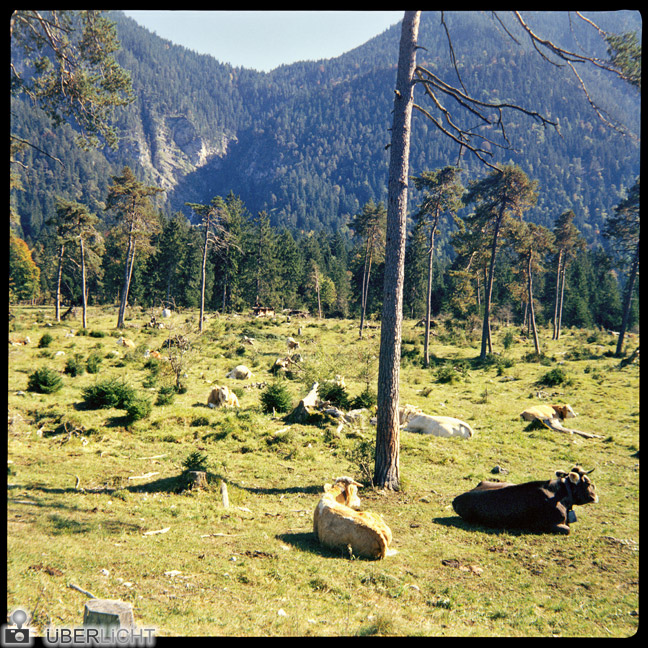
Cows in the Bavarian Alps, Germany (2007), Agfa Click II – © Überlicht (MB)
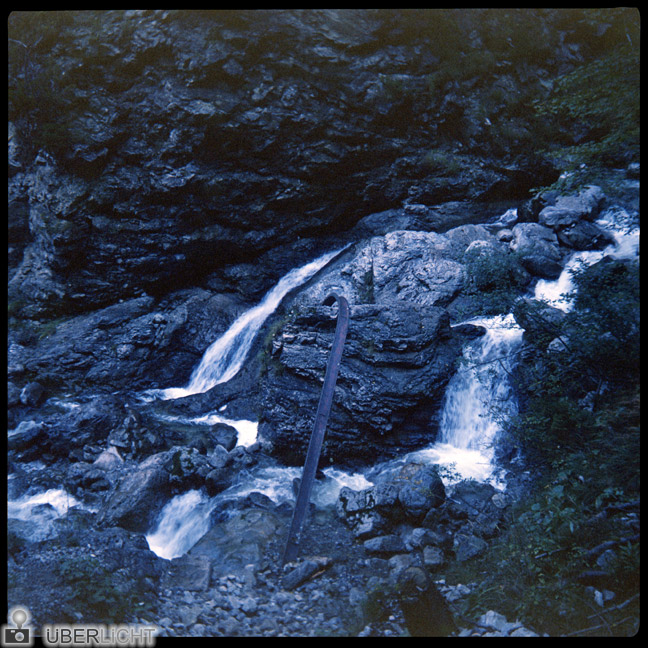
Mountain torrent in the Bavarian Alps, Germany (2007), Agfa Click II – © Überlicht (MB)
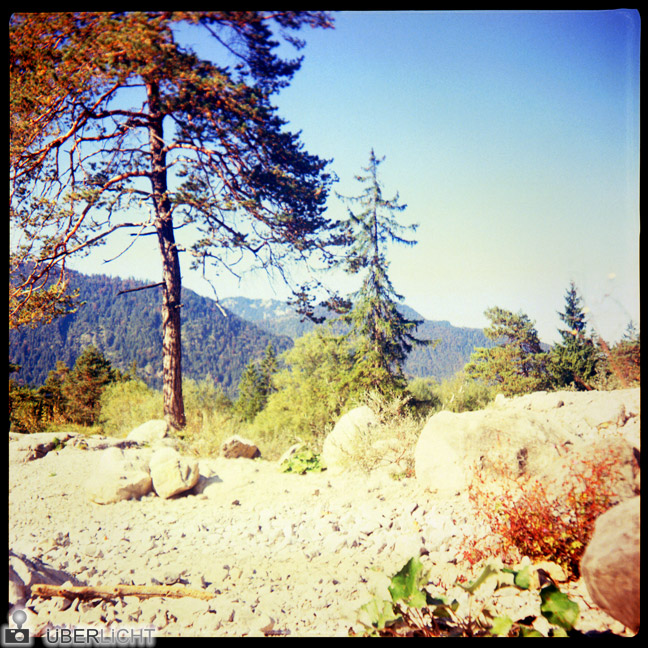
Alpine foothills, Germany (2007), Agfa Click II – © Überlicht (MB)
Technical details
The Agfa Click II was produced in Germany from the end of the 1950s until 1970 – how many cameras can claim that nowadays? It has approximately 75 mm focal length, which is almost a normal lens for 6×6 cm medium format. The settings of the fixed-focus lens that focuses on 4 m to infinity, are limited to one lever, which can be set to “sun” (ca. f 16) or “clouds” (f 8.8). Apart from changing the aperture, the same selector can be used to swivel in a built-in close-up portrait lens (f 8.8), that focuses on 2.5 to 4 m. The exposure time always amounts to 1/30 sec, which is why sometimes photographs become blurred by camera shake – but this simply belongs to the Click’s characteristics. Once there was the clip-on flash Clibo enabling the Click to take pictures regardless of sunshine, but it was only produced in a much smaller number of pieces. Furthermore, fitting batteries and flash bulbs are extremely rare today.
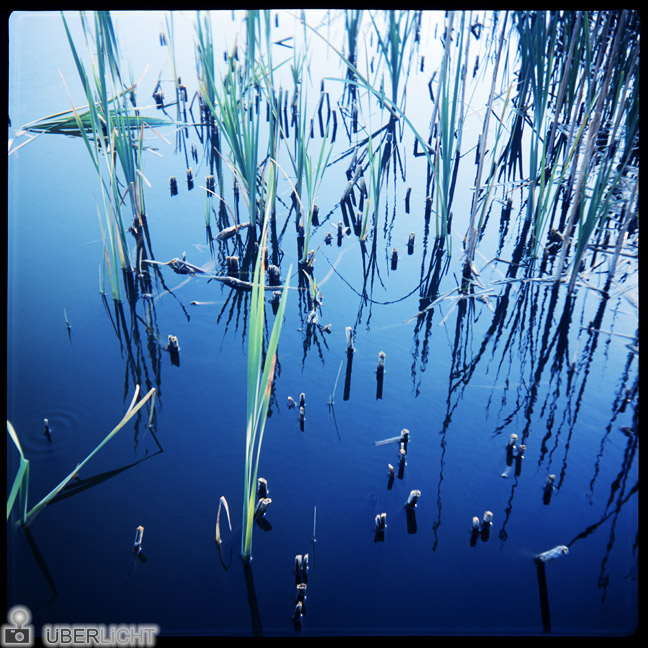
Pond in Southern Bavaria, Germany (2008), Agfa Click II – © Überlicht (MB)
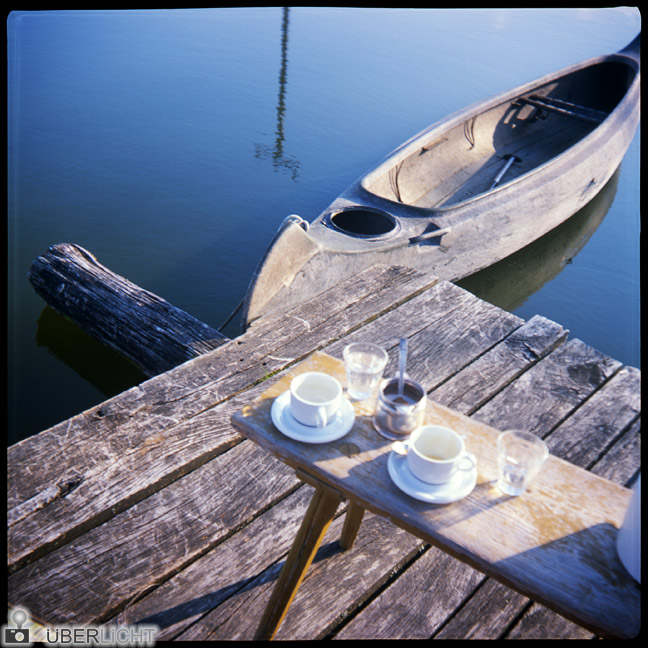
Boat on a pond in Southern Bavaria, Germany (2008), Agfa Click II – © Überlicht (MB)
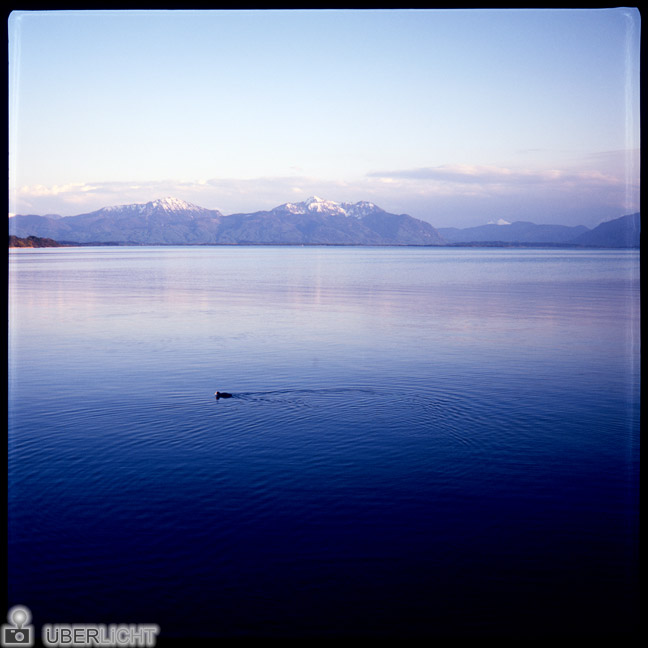
Lake Chiemsee, Germany (2008), Agfa Click II – © Überlicht (MB)
When I bought my pre-owned Click II, I found an old film inside that had not been manufactured since 1974 – which also explains the camera’s sound condition. Since then I have almost exclusively equipped the camera with (in part expired) slide film. By choosing the film material the last “setting option” is gathered.
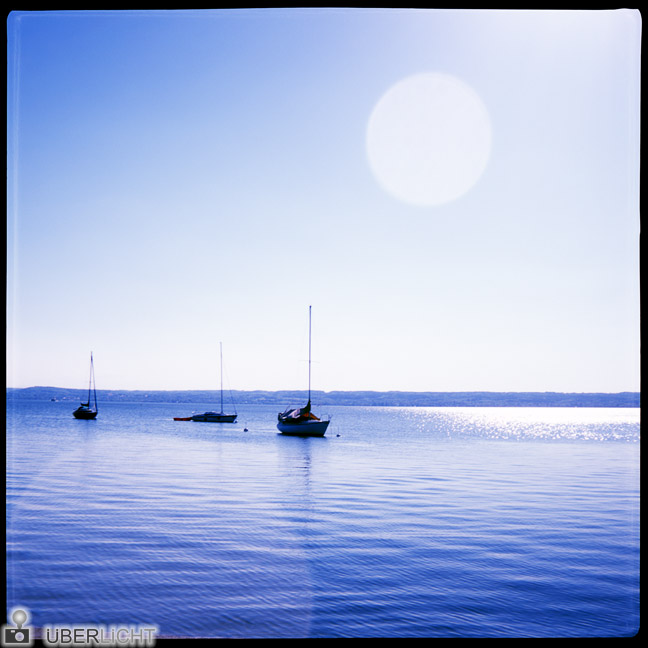
Lake Ammersee, Germany (2008), Agfa Click II – © Überlicht (MB)

Cow paddock in Southern Bavaria, Germany (2008), Agfa Click II – © Überlicht (MB)
En route with the Click
In all fairness, the technical details concerning the Click are of marginal importance. Much more essential are subjects that stand to benefit from a restrained unsharpness and vignetting as well as a colour shift which results from expired film emulsion. Therefore it is definitely worth taking the Click outside. Weighing only 460 g (including leather case and roll film) it is far from being a burden. For my liking the Click is primarily a fair weather camera, although it can be used in all weathers, independent of power supply and anywhere around the world. All that is necessary is a 120 roll film, which is manually wound forward by means of the winding knob after every single exposure. Due to the few settings (one exposure time and two apertures) photographing with an Agfa Click is so easy – far from the compulsion to take perfect pictures. When getting the film developed you will never know in advance what you will receive exactly. (However you can be sure to get a well exposed film as the Click is much more reliable than a Holga without doubt.)

Winter landscape, Germany (2009), Agfa Click II – © Überlicht (MB)

Alpine winter landscape, Germany (2009), Agfa Click II – © Überlicht (MB)
The Agfa Click II provides all images with its own characteristic visual impression, even those that would look rather unexceptional and boring when captured with perfect sharpness, perfect colour reproduction and perfect exposure. That is what makes the Click so special and in my opinion more than perfect. When it is treated well, it will probably render a service for the next 50 years or more – as long as roll film and film laboratories exist.
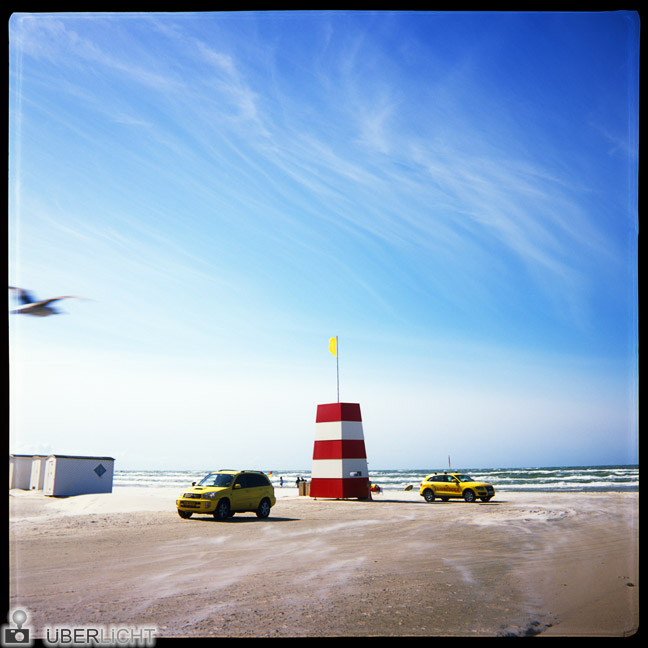
Lifeguard, Denmark (2009), Agfa Click II – © Überlicht (MB)
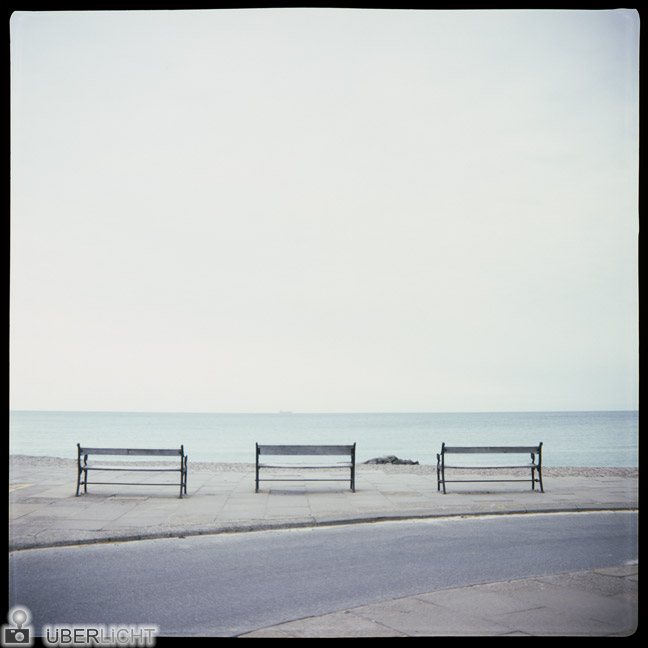
Denmark (2009), Agfa Click II – © Überlicht (MB)
If you wish for more megapixels the developed slides or negatives can be scanned with high resolution – but don’t expect them to become any sharper.
The original German post has been published on Überlicht.de November 15th 2010.



It’s a really nice entry. It doesn’t need much equipment and features to take good pictures. Thanks for sharing 🙂
Great photographs! I recently found my Click III (given to me as a birthday present in 1973) in an attic, and to my surprise, everything works. The metal lens mount is scratched and dented (probably from some rough attempt to repair it in the ’70s), but everything is still functional, and the leather case and strap are intact.
I shot no more than about 20 rolls of black & white film with it between 1973 and ~1977, when I upgraded to an Agfa Isoly II, which was considered a much better medium-format camera then (it had a standard hotshoe for an electronic flash, unlike the Click III). Colour film in 120 format was too expensive for me then, so I stayed with B&W even with the Isoly, which produced some remarkably sharp images when stopped down to f/16 or lower.
Le bon appareil ne fait pas le bon photographe.
Un bon photographe sait utiliser son appareil pour faire de belles photos
Good camera does not a good photographer.
A good photographer knows how to use his camera to make beautiful pictures
I have an Agfa Clack (6×9) with the single meniscus lens. After using that, I wanted sharper images in medium format.
After reading your blog and viewing the sample photos, I bought a Click II on eBay, with its 2-element achromat lens. I shot 12 exp. of Ektar. When the scans came back from the lab I was blown away — wunderbar! Very sharp, great color, low distortion. This is now my 6×6 camera.
Hi, I found an old Agfa Click IV and it seems to have three settings on it. Sunny, Shade and Cloudy. Since you have two of the settings, I’m guessing the f-stops will be 8.8, 12, and 16. Do you know if that is correct? It’s difficult to find information about the Click IV online and no one seems to have the same model as I have.
Cheers,
George
Hi George,
a quick search did not give me many useful results, either. The Click IV seems to appear mainly on asian websites. Here is one entry I found: http://shreyasguravphotography.blogspot.de/p/agfa-click-iii-iv-achromat.html
Cheers,
Andreas
Beautiful photo’s. Nostalgic for me since the Agfa Click OI was mij very first camera when I was about 12 years old in 1967. My father teached me how to develop the films and photo’s.
[…] just take my word on the Click-II, you can check out the reviews by other awesome camera reviewers! UberLicht – Agfa Click-II, More than Perfect Film Photography Project – Film Photography Podcast Episode 132 Canny Cameras – Agfa […]